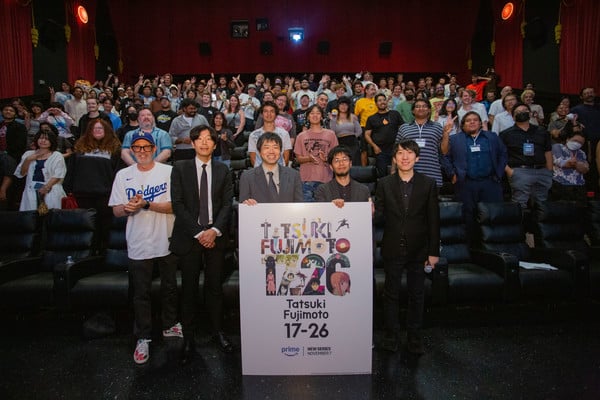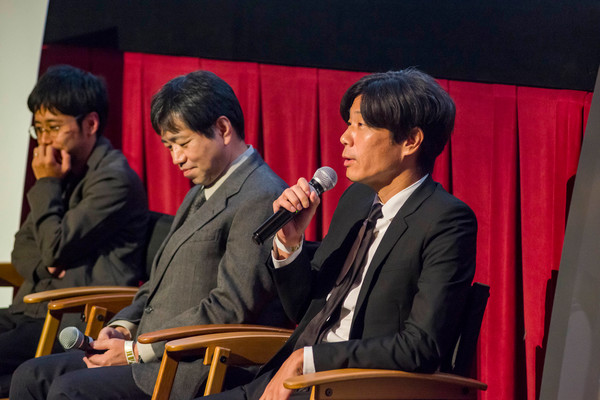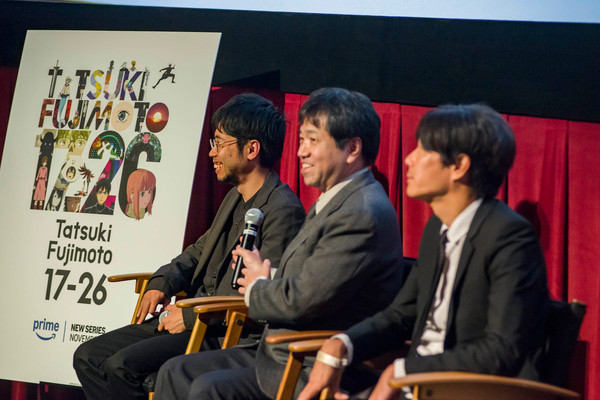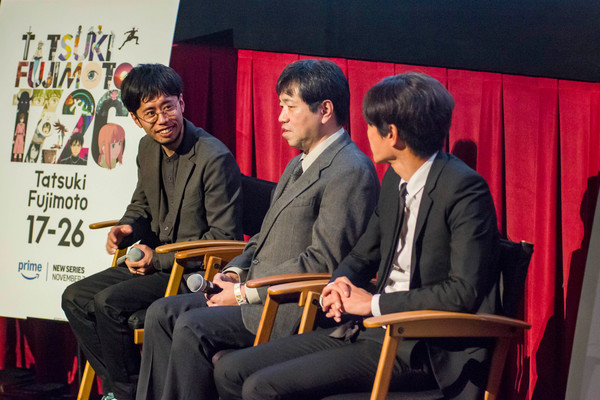Laugh, Cry, and Cheer for the Stories in Tatsuki Fujimoto 17-26 Anime Anthology
by Kalai Chik,Tatsuki Fujimoto's two-volume anthology collection comes alive in eight separate animated episodes, each told by seven different directors and six animation studios. The adaptation of Tatsuki Fujimoto 17-26 debuted its world premiere at the Global Stage Hollywood Film Festival, with guests director Seishirō Nagaya (“A Couple Clucking Chickens Were Still Kickin' in the Schoolyard”), director Nobuyuki Takeuchi (“Love is Blind”), and Avex Pictures producer Ryo Oyama sharing insights into how the film was made. While the limited theatrical release in Japan is split into two separate four-episode parts, the lucky fans in attendance were able to watch all eight episodes in one. As the audience watched the screen, the guests were also intently monitoring the room's reactions. After the premiere and a Q&A session, the three guests spoke with Anime News Network further on the creative decisions that brought the adaptation to the big screen.

Tatsuki Fujimoto 17-26 had a limited two-week theatrical run in Japan on October 17, 2025, while its worldwide debut is set for November 7 on Prime Video.

How and when did Avex Pictures become involved in adapting Tatsuki Fujimoto 17-26?
Producer Ryo OYAMA (Avex Pictures): I read the anthology books prior to Look Back. Although these projects didn't start simultaneously, we started planning on Tatsuki Fujimoto 17-26 when we worked on Look Back.
How were the directors chosen for each story, or did the directors choose the episodes they wanted to work on?
OYAMA: Since this project involves many different studios, we didn't start working on them all at the same time. It depended on the project. Sometimes the director picked the short story they wanted to do, and sometimes the producers came to them and asked if they would work on a specific piece.

You were in charge of the script and direction of Tasuki Fujimoto's first one-shot he made when he was 17. What was your first impression of the story?
Director Seishirō Nagaya (“A Couple Clucking Chickens Were Still Kickin' in the Schoolyard”): It was an unconventional story, in a good way.
Did you choose to work on the first story?
NAGAYA: Yes, I did.
What drew you to it?
NAGAYA: First of all, I liked this story the most out of the eight. I felt my strengths could work with this story better. Because I don't normally do action-packed stories, I thought I could give a more realistic take on the alien's visions and emphasize the uniqueness of the story.
Given the subject matter of humans being eaten by aliens, the atmosphere of the animation could have been darker and more terrifying. Why did you decide to go with a colorful –in terms of the lighting and bright tone–comedic, and exciting direction?
NAGAYA: The Japanese title is a tongue twister, “Niwa ni wa Niwa Niwatori ga ita.” It's a fun title. This one-shot isn't a serious alien movie like Ridley Scott's [Alien], so that was my original intention. As you know, this is Fujimoto's first work. I wondered if he had a vision of himself being a human surrounded by aliens or if he was an alien among humans on Earth. I thought of what his inspiration could have been to have written this kind of story as their first published work.
Perhaps he had some trouble with human relationships, and I felt that there was sarcasm in the work itself. I'd rather have people relate to the work in a more subjective way instead of an objective way. If it were a scarier take, the viewer might feel more distant from those characters. So, I wanted fans to feel closer to them.
In the one-shot story, we don't see as much action or fighting as we do in the animated one-shot. Why were the action sequences an aspect you wanted to show in the animation?
NAGAYA: While I intended to show the alien's everyday life, I wanted to have action sequences as a reward for the audience. It's more entertaining. The one-shot manga ends with a pitch-black frame, which stimulates our imagination as to what's happening there. The story was created probably more than 10 years ago, but it was fun for me to adapt the story into the animation because of this room to be able to play.
You also directed a 2024 POKÉTOON episode, "The Angry Primeape Observation Diary," which also had a lot of action sequences. How did you take your experience from that special and apply it here?
NAGAYA: It's a little behind the scenes, but “Niwa ni wa Niwa Niwatori ga ita” / “A Couple Clucking Chickens Were Still Kickin' in the Schoolyard” was done before the POKÉTOON episode. I always enjoy balancing out everyday life and action, which shows in this work.

You mentioned in the Q&A that you were given “Love is Blind” to work on. You also directed the movie Fireworks, which is a romance film. Did you draw from your experience working on that movie to this romantic comedy one-shot?
Director Nobuyuki TAKEUCHI (“Love is Blind”): Experience is always helpful. Fireworks was the first movie I directed, and I applied what I learned after reflecting on that experience and building from it.
There is constant tension because the student council president is constantly interrupted, but that can come off as repetitive if it isn't expressed well. How did you keep the dialogue from getting stale?
TAKEUCHI: Fujimoto's original comic intentionally used this repetition to make the scene funny. I thought it worked by itself, like when the new characters come in and they interrupt Ibuki in the same way. So, wherever repetition was possible, I incorporated it. The cuts where Hayasaka-sensei and the robber place their hands on Ibuki's shoulder are examples of this. Additionally, the voice actors Shun Horie and Shion Wakayama performed these repetitions very skillfully, adding variations to keep them from becoming monotonous.
What was the biggest challenge in showing Ibuki's confession?
TAKEUCHI: It's more of a technical issue, but it was hard for me to match the character's mouth movements with the voice actor's performances. The close-up cut of Ibuki's face when he confesses, "Please go out with me," was the biggest challenge.
Tatsuki Fujimoto 17-26 will debut worldwide on November 7 on Prime Video.
discuss this in the forum |